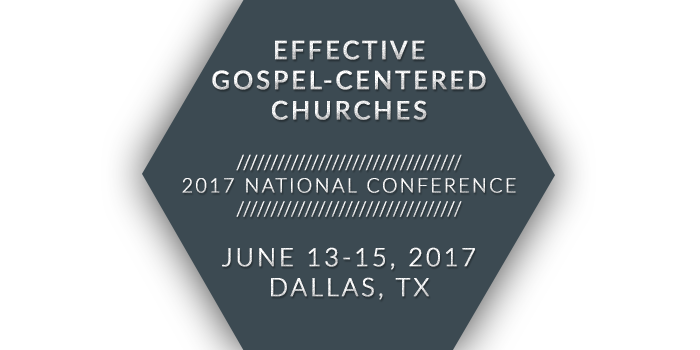
Reflections on My Expectations of Ministry Fifty Years Ago
John G. Mason – July 28, 2020
The following article was first published in the Australian Church Record Winter 2020 Journal, which can be freely accessed at: https://www.australianchurchrecord.net/winter-2020-journal/ It is republished with permission of the ACR.
I have been asked to reflect on my expectations of ministry around the time of my ordination in the Diocese of Sydney some fifty years ago.
- Background
1.1 A Changing World. I became a student at Moore College in 1966, in the decade of significant cultural upheaval. In 1962 the pill had been released, and the Beatles sang, All you need is love. It was an age of drugs and sex and of protest against the Vietnam War.
Some forty-five years later, in August 2011, The Wall Street Journal carried an article by Dr. Jonathan Sacks, then chief rabbi in Britain, commenting on the 60s: In ‘Reversing the Decay of London Undone’ he wrote: ‘In virtually every Western society in the 1960s there was a moral revolution, an abandonment of its entire traditional ethic of self-restraint… The Judeo-Christian moral code was jettisoned. In its place came: whatever works for you…’
1.2 The Unchanging God. Yet, in the goodness of God, the sixties in Sydney was the decade following the 1959 Sydney Billy Graham Crusade when thousands of lives had been changed through the ministry of God’s gospel. In his mercy, at the end of the fifties God had brought many to himself, preparing potential ministers for gospel ministry in the age of change. We see God’s faithfulness to Jesus words: “I will build my church and the gates of hell shall not prevail against it…” (Matthew 16:18).
For my part, having been taught the Scriptures from an early age, I had increasingly come to commit my life to the Lord whom I had known from an early age. That said, it was during my study at Sydney University in the early 60s that I was confronted with the new lifestyle patterns my contemporaries were adopting. Identifying two key questions that were foundational to my faith – the authenticity of the New Testament and the resurrection of Jesus – I worked at addressing them. Ancient History was one of my subjects. Impressed with the weight of evidence that pointed to the historical reliability of the New Testament and the physical resurrection of Jesus, and personally drawn by God’s love in Christ, I committed my life to serve him in the ministry of his Word.
Following a year of teaching secondary school English and History, I entered Moore College in 1966 (aged 21). Ordained in Sydney (Deacon, 1969, Presbyter, 1970), I was Assistant Minister at Yagoona, St Michael’s Wollongong, and Eastwood, before undertaking a New Testament research degree at Durham University, UK. Returning to Australia in 1976, I was invited to start a new church in Wanniassa as well as teach New Testament at the Canberra College of Divinity. By God’s grace, St Matthew’s Wanniassa commenced under my ministry leadership. I was also the founding chairman of Trinity Christian School, Wanniassa,
My earnest prayer and deepest longing was, and still is, to see people of all ages everywhere to come to a vital, personal and growing relationship with Jesus Christ as Lord. I am keen to help people understand that Jesus is the one person who provides meaning and hope for us in our confused and anxious world.
At the same time, through my own reading of the Scriptures and my first-hand knowledge of the hours my father put into preparing for his Bible-based preaching ministry, along with my own reading, I had come to understand that the ministry of God’s Word is key to the life and growth of God’s people. My reading had included J.I. Packer’s, Fundamentalism and the Word of God and Evangelism and the Sovereignty of God as well as John Stott’s, Basic Christianity. I was also aware of John Stott’s significant expositional preaching ministry at All Souls Langham Place, London.
I understood that ministry would require hard work and was not for the faint-hearted. Prayer and growth in God’s love through an ever-increasing understanding of the Scriptures would be essential.
- Ministry in a Fallen World: Texts that have carried me through
Given that my ministry is primarily the ministry of God’s Word, let me identify four texts that have been foundational and inspirational.
- The Task of Ministry – Matthew 28:18-20
Jesus said…, “All authority in heaven and on earth has been given to me. Go therefore and make disciples of all nations, baptizing them in the name of the Father, and of the Son and of the Holy Spirit, and teaching them to obey everything that I have commanded you. And remember, I am with you always, to the end of the age.”
Jesus’ commission of his closest followers to make disciples, one of his enduring mandates to his people in every age. We are not just called to make converts and amass statistics! Rather going we are to make disciples, baptizing and teaching. Baptism in the name (singular) of the Father, of the Son and of the Holy Spirit, signifies a changed understanding of God and a vital relationship with him through the Lord Jesus. Furthermore, those who were baptized are to be taught more about Jesus and the new life-style he commands.
And because the Lord Jesus has all authority, his commission to his people guarantees his power and the outcomes he desires. Indeed, we find in these words the authority of Jesus already in operation. They are the anticipation of the consummation of his kingdom at the end of the age. Jesus’ concluding promise is so encouraging. Our English translation always masks a Greek expression we only find here: it means the whole of every day. Jesus promises to be with us as we make disciples of others, the whole of every day to the very end of the age.
For the present two kingdoms exist side by side. There is the kingdom of this world with its chaos and noise, good times and bad times, love and laughter, but ultimately its darkness and despair. Alongside this, there is a very different kingdom, as different as night is from day. It is Jesus’ kingdom holding out meaning and hope, joy and laughter for eternity. But it is here we feel the pinch: we’re not there yet.
- The Hard Work of Ministry – Colossians 1:28-29
It is he (Christ) whom we proclaim, warning everyone and teaching everyone in all wisdom, so that we may present everyone mature in Christ. For this I toil and struggle with all the energy that he powerfully inspires within me.
I think it was Peter Johnston, Rector of Islington, London, who gave a talk at Moore College on the work of ministry with special reference to these verses. Ministry involves hard work.
In this section Paul provides a job specification for effective ministries that build good churches. In good churches the members are making spiritual progress, and for that to happen lives need to be grounded and formed in the truth. No church is going to grow which goes soft on truth. Paul was committed to putting in the hard work to ensure that people heard and were built up in the truth of God’s Word.
The word struggle is the word from which we get our word, agony. It described the ancient wrestler in the athletics arena, struggling with his opponent and involving intense physical exertion. This is how Paul saw his ministry of teaching and preaching. School teachers will understand. Getting new ideas across to unresponsive minds can be gruelling. And that’s exactly what Paul experienced in all the churches.
We see something of Paul’s methods as he proclaimed God’s Word and warned God’s people against error. It is also helpful to notice that Paul didn’t see himself working alone. Consistent with Jesus’ promise, Paul tells us in verse 29 that as he worked, God was also at work with him. Paul appropriated and experienced God’s power at work, not by experiencing some mystical sense of power running through his body, but through seeing the results of God’s work – people growing into maturity in Christ.
- Don’t Lose Heart – 2 Corinthians 4:1-6
1Therefore, since it is by God’s mercy that we are engage in this ministry, we do not lose heart. 2We have renounced the shameful things that one hides; we refuse to practice cunning or to falsify God’s Word; but by open statement of the truth we commend ourselves to the conscience of everyone in the sight of God. 3And even if our gospel is veiled, it is veiled to those who are perishing. 4In their case the god of this world has blinded the minds of the unbelievers, to keep them from seeing the light of the gospel of the glory of Christ, who is the image of God…
In the midst of the vicissitudes of ministry two challenges constantly stand out: ‘Why don’t people believe?’ and ‘How do people come to believe?’
Paul’s words, the god of this world has blinded the minds of unbelievers are helpful.
Many interpret these words as a reference to the power of evil. But while, in the Parable of the Sower, Jesus speaks of the devil taking the seed of God’s word from people’s hearts before it has had time to take root and grow, he also speaks in the parable of other reasons people fail to respond to the gospel (Luke 8:11-15).
However, I find another reading of the phrase makes better sense of Paul’s meaning. The god of this age is an appositional genitive meaning, ‘the god who consists of this age’. People make this age their god. And that is what blinds them.
Another example of this kind of phrase is in verse 6: the light of the knowledge of the glory of God meaning, ‘light which consists of the knowledge of the glory of God’.
So, reading the phrase the god of this age in this possessive sense, Paul is saying that it is the idolatrous preoccupation with the material things of this world that blind people to the spiritual realities of the next.
This is consistent with the overall teaching of the Bible that it is because people have chosen to worship what is less than God that God has given them over to a darkened mind. And yes, the devil finds it easy to steal the Word of God from their hearts.
To bring a Reformed Anglican perspective to my reflections, Dr Ashley Null has recently summarized Thomas Cranmer’s understanding of human nature: ‘What the heart loves, the will chooses, and the mind justifies.’ Cranmer understood that ‘the trouble with human nature is that we are born with a heart that loves ourselves over and above everything else in this world, including God. We are born slaves to the lust for self-gratification,….’ In other words, men and women choose not to believe.
So, to a second question, how does anyone come to believe? Paul’s answer is found in verses 5-6: For we do not proclaim ourselves; we proclaim Jesus Christ as Lord and ourselves as your slaves for Jesus’ sake. 6For it is the God who said, ‘Let light shine out of darkness’, who has shone in our hearts to give the light of the knowledge of the glory of God in the face of Jesus Christ.
People come to believe through the proclamation of God’s good news in Jesus Christ. But there is something else: God chooses to accompany our speaking with an element we can’t provide – his miracle of illumination. With reference to Genesis 1:3-4, Paul is saying that turning from unbelief to belief involves an act of divine initiative as awesome and powerful as the act of creation. God says to our hearts, ‘Let there be light’ and there is light. And this light is the knowledge of the glory of God that is found in Jesus Christ. And what we see in the face of Jesus is not some spiritual insight. It is the vision of deity.
To return to Paul’s opening words of the chapter, he is saying that his ministry is not about himself, but Jesus Christ as Lord. It is not his gifts of preaching and oratory, his charisma and charm, that wins men and women to faith. Rather, it is their encounter with Jesus.
Paul is telling us that in his ministry he focuses on Jesus – that Jesus is not just a great teacher or miracle worker, but God walking in our shoes. Paul wants his hearers to know that Jesus is the prophet who fully and finally reveals God because he is God in the flesh.’
And given that men and women worship the world and not God, Paul’s words here indicate that he spoke of God’s mercy being far greater than we ever dreamed. And as he preached, God through his Spirit was taking the veil from people’s hearts, enabling them to see the glory of God shining in the face of Jesus Christ.
We see why Paul did not lose heart. God chooses to work through our verbal ministry which announces God’s mercy. Given the flow of Paul’s thought from the end of 2 Corinthians 3 into chapter 4, we see that it is God’s Word and the power of God’s Spirit that opens our eyes to Christ. God’s Spirit turns on the light so that we see Jesus.
One of the great truths about ministry is that the outcome of faithful preaching where God is at work is changing hearts and lives. Ashley Null says this about Thomas Cranmer’s theology. ‘It is a religion of the heart. If our hearts change, then so will our actions and attitudes’. It is God’s glory to have rescued us and turned our hearts to him. Clearly prayer that God will honour his name is tantamount. But will he?
- Pray for the Honouring of God’s Name – Luke 11:5-13
In Luke 11: 9 and 10, Jesus says: “Ask, and it will be given you; seek, and you will find; knock, and it will be opened to you.”
In verses 5-8 Jesus tells a parable which tells us that because of his very nature, God will answer our prayers for the honour of his name[1] – something that Jesus said we need to pray for (Luke 11:2).
And in Luke 11:13 Jesus says: “How much more will the heavenly Father give the Holy Spirit to those who ask him.” He was speaking of the day when God would send his Spirit into the world opening our minds to hear God’s voice through his Word, and opening our hearts enabling us to call him, Father. Jesus’ words, “Ask… seek… and knock…” became etched in my memory.
- Some Observations:
3.1 The ministry of God’s Word is one of service. Serving God and his people as the senior minister of a congregation is a very special privilege.
3.2 Because the ministry of the gospel is hard work, it is so important to pray for the right marriage partner – someone who understands the privilege and challenges of this ministry and who is willing to partner with you in the Lord’s work.
3.3 From New Testament times local churches have been key in the formation of God’s people and the promotion of God’s gospel.
3.4 Because the ministry of God’s Word has both public and private aspects, I have found the pattern of Bible reading, prayer and preparation in the morning, with pastoral and midweek meetings from lunch through the afternoon, a useful pattern. In the age of the computer and cyber connectivity it is too easy to remain bound to the screen and neglect the importance of face-to-face personal, pastoral ministry.
3.5 With the cultural changes today, and now the challenges of Covid-19, church life and ministry structures may need to be reviewed. For example, senior ministers of a cluster of churches could explore ways ministry effectiveness and efficiency can be improved by working out of one centre with certain specialised ministries across the several churches – children’s and young peoples’, ministry training, counselling and care, communication and administration. Distinctive larger churches are needed. But with their large ministry teams they often draw people away from smaller churches, leading to ministry inefficiency and loss of vitality in both the larger churches and what could become, more effective neighbourhood churches that can address specific local needs.
John G. Mason is an honorary canon of St Andrew’s Cathedral, Sydney, and commissary to the Archbishop of Sydney in the USA. Following ministries in two Anglican Churches in Australia (Canberra, ACT and Sydney, NSW), he was invited by Timothy Keller to establish a new (Anglican) church in New York City in 2001. He was the founding minister of Christ Church NYC and what is now Emmanuel Anglican Church, NYC. He is the President of the Anglican Connection.
[1] See further, John G. Mason, Luke: An Unexpected God, 2nd Edition, Aquila: 2019, pp.165ff



